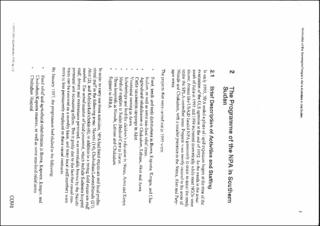| dc.description.abstract | This thesis aims to analyze the relationship between the Norwegian People’s Aid and the United States Agency for International Development, also known as USAID, and their cooperation between 1993 and 2005, in the region which today constitutes South Sudan. This area, which was previously attached to neighboring Sudan, was during this period engulfed in a civil war between the Sudan People’s Liberation Movement and the government of Sudan. In 1994, the Norwegian People's Aid became one of the primary partners in the U.S. humanitarian response, which was organized by USAID as a reaction to the consequences of the civil war. USAID had up until 1993 exclusively provided emergency relief, but from 1994 there was a shift towards making humanitarian aid as ‘developmental’ as possible in complex crisis situations, such as Sudan and South Sudan. This resulted in new ways of providing humanitarian aid to South Sudan, an approach quickly adopted by the Norwegian’s People Aid in their Food Security program, which was financed by USAID. The overarching ambition of this thesis is to investigate whether USAID as a major donor to the Norwegian People’s Aid’s South Sudan-program influenced the organization’s work. To achieve this, interviews conducted with former employees of the Norwegian People’s Aid have been analyzed, in combination with source-material from both the Norwegian People’s Aid and USAID. Norwegian People’s Aids activities in South Sudan have been viewed in light of USAID’s strategy in South Sudan, and the context within which it was produced. This methodology was employed in order to determine if and how USAID influenced Norwegian People’s Aid’s work between 1993 and 2005. I argue that the strategy of USAID clearly affected Norwegian People’s Aids work in South Sudan. First and foremost, this can be observed in how the already strong position of the Norwegian People’s Aid within South Sudan was fortified both economically and geographically. However, already from the commencement of the cooperation, the perspectives of the two organizations can be construed to have been aligned regarding how to address humanitarian needs in South Sudan. Therefore, from an operational view, Norwegian People’s Aid worked largely according to its own established premises. An additional argument put forth in this thesis is that USAID, despite its own developmentally oriented strategy, might have hindered Norwegian People’s Aid’s aspirations in moving its activities towards development aid. The research question is also briefly viewed from the opposite side: If the Norwegian People’s Aid had any influence on USAID’s strategy in South Sudan, with there being certain factors pointing towards such an interpretation. | |

